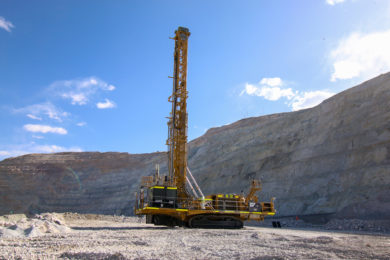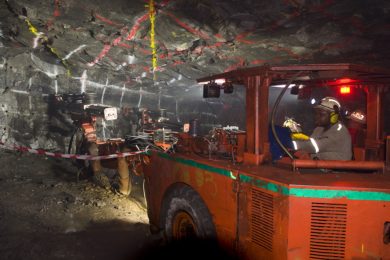Editorial input has been requested for International Mining’s Novermber focus on GPS and surveying. On that subject, news comes from the USA that MaptekTM I-SiteTM laser scanning expertise and software is being used to map the geology and layout of the old Homestake gold mine in Lead, South Dakota. The Deep Underground Science and Engineering Lab (DUSEL) will provide for scientific studies in particle and nuclear physics, geology, hydrology, geo-engineering, biology, and biochemistry.
The project, funded by the National Science Foundation, will allow geoscientists and engineers to research the behaviour of subsurface rock, minerals, water and energy sources. Cosmic ray research will be conducted and the large number of drifts, shafts and raises, boreholes, dedicated access and well-known patterns of water flow will allow studies of the dynamics of the earth’s crust, critical issues of carbon sequestration and rock mechanics over long time scales and studies on microbiology and life at extreme depth. (See 101 Things to do with a Hole in the Ground – ISBN 978-0-9562213-1-5).
A key reason for selecting Maptek to carry out the underground scanning of drifts is the experience of technical personnel in both mining and laser scanning, as well as in data filtering and modelling. Maptek says its “I-Site technology is at the forefront of its field. I-Site Studio software is the ideal choice for projects with vast datasets.”
Homestake, the deepest mine in North America with galleries at 2,438 m, is well suited for experiments that require extremely low cosmogenic backgrounds. In April 2009 Maptek technical services staff scanned 2 drifts at the 91-m level, capturing 8 million points – 8 Gb data – for geological mapping and evaluating structures. These drifts were last mined in 1920, and lacked geological mapping to the level of detail required.
“Maptek has the experience in adapting to the conditions and customising workflow to suit. Maptek’s software has the unique features we need to get the right output for the project,” commented Dr Zbigniew (Ziggy) J. Hladysz from the South Dakota School of Mines, which is involved in site inspections and creation of 3D structural models.
I-Site Studio software has been designed with mine surveyors in mind; DUSEL has a few extra requirements. Maptek developed new tools to manage the massive volume of captured data, maintaining the required accuracy and detail for analysis. These tools provided the ability to combine lower resolution scan data with high resolution photographic imagery. Modelled surfaces incorporating photographic detail could then be constructed from this data and exported for use in Maptek VulcanTM for geotechnical analysis.
“Maptek provides the best integration of the scanned data from its Studio software with 3D CAD geotechnical tools through Vulcan Envisage,” added Dr Hladysz.
“Because all Maptek products are developed by Maptek, we have the flexibility to adjust to customer and project requirements,” explained Maptek I-Site Technical Services Manager, Scott Schiele. “We’re keen to work on this project as it allows us to prove our strengths. In fact, all of our users will benefit from the latest software enhancements which will be incorporated into the next release version of I-Site Studio”, he concluded.









